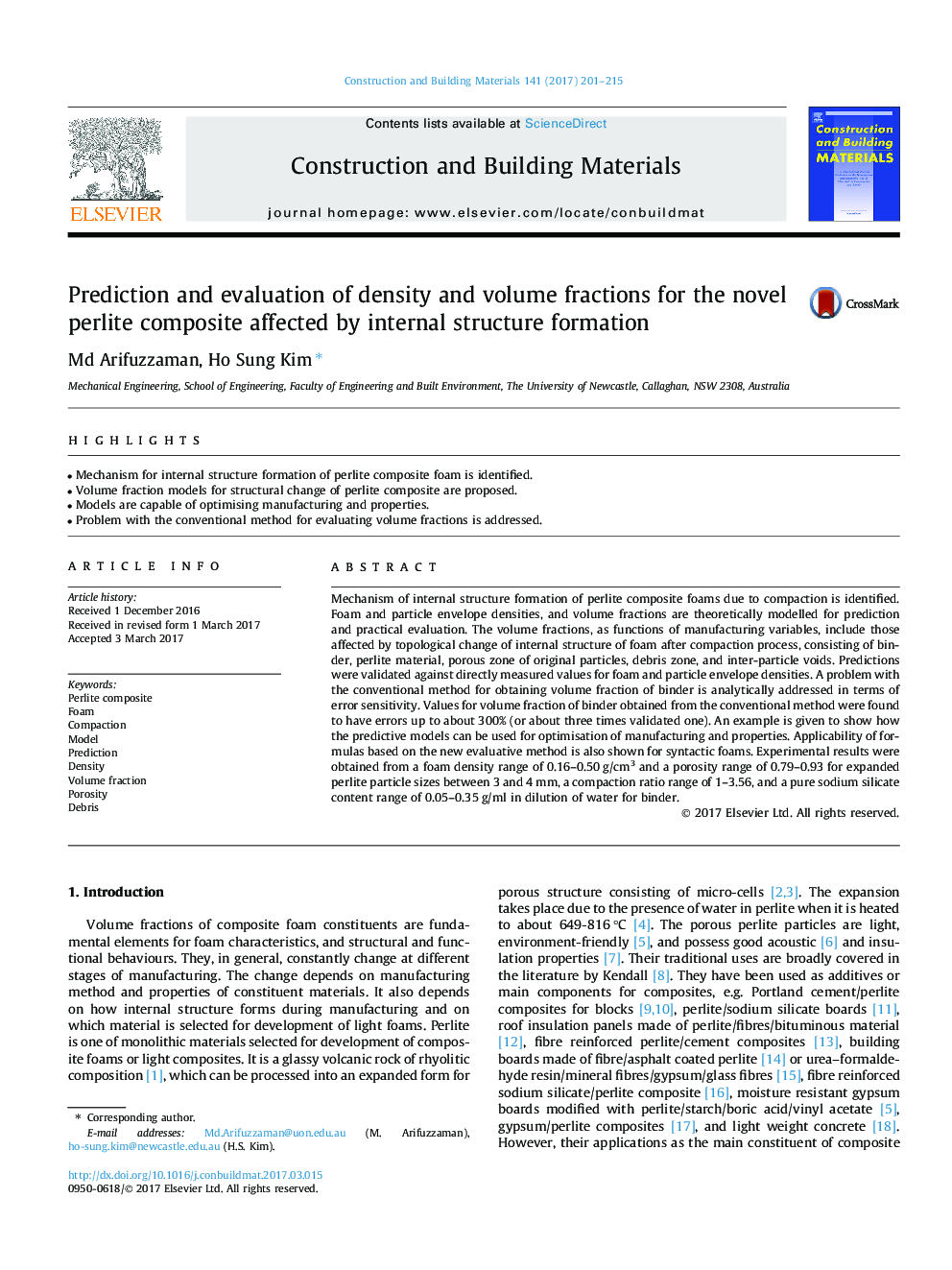| Article ID | Journal | Published Year | Pages | File Type |
|---|---|---|---|---|
| 4913377 | Construction and Building Materials | 2017 | 15 Pages |
Abstract
Mechanism of internal structure formation of perlite composite foams due to compaction is identified. Foam and particle envelope densities, and volume fractions are theoretically modelled for prediction and practical evaluation. The volume fractions, as functions of manufacturing variables, include those affected by topological change of internal structure of foam after compaction process, consisting of binder, perlite material, porous zone of original particles, debris zone, and inter-particle voids. Predictions were validated against directly measured values for foam and particle envelope densities. A problem with the conventional method for obtaining volume fraction of binder is analytically addressed in terms of error sensitivity. Values for volume fraction of binder obtained from the conventional method were found to have errors up to about 300% (or about three times validated one). An example is given to show how the predictive models can be used for optimisation of manufacturing and properties. Applicability of formulas based on the new evaluative method is also shown for syntactic foams. Experimental results were obtained from a foam density range of 0.16-0.50Â g/cm3 and a porosity range of 0.79-0.93 for expanded perlite particle sizes between 3 and 4Â mm, a compaction ratio range of 1-3.56, and a pure sodium silicate content range of 0.05-0.35Â g/ml in dilution of water for binder.
Related Topics
Physical Sciences and Engineering
Engineering
Civil and Structural Engineering
Authors
Md Arifuzzaman, Ho Sung Kim,
